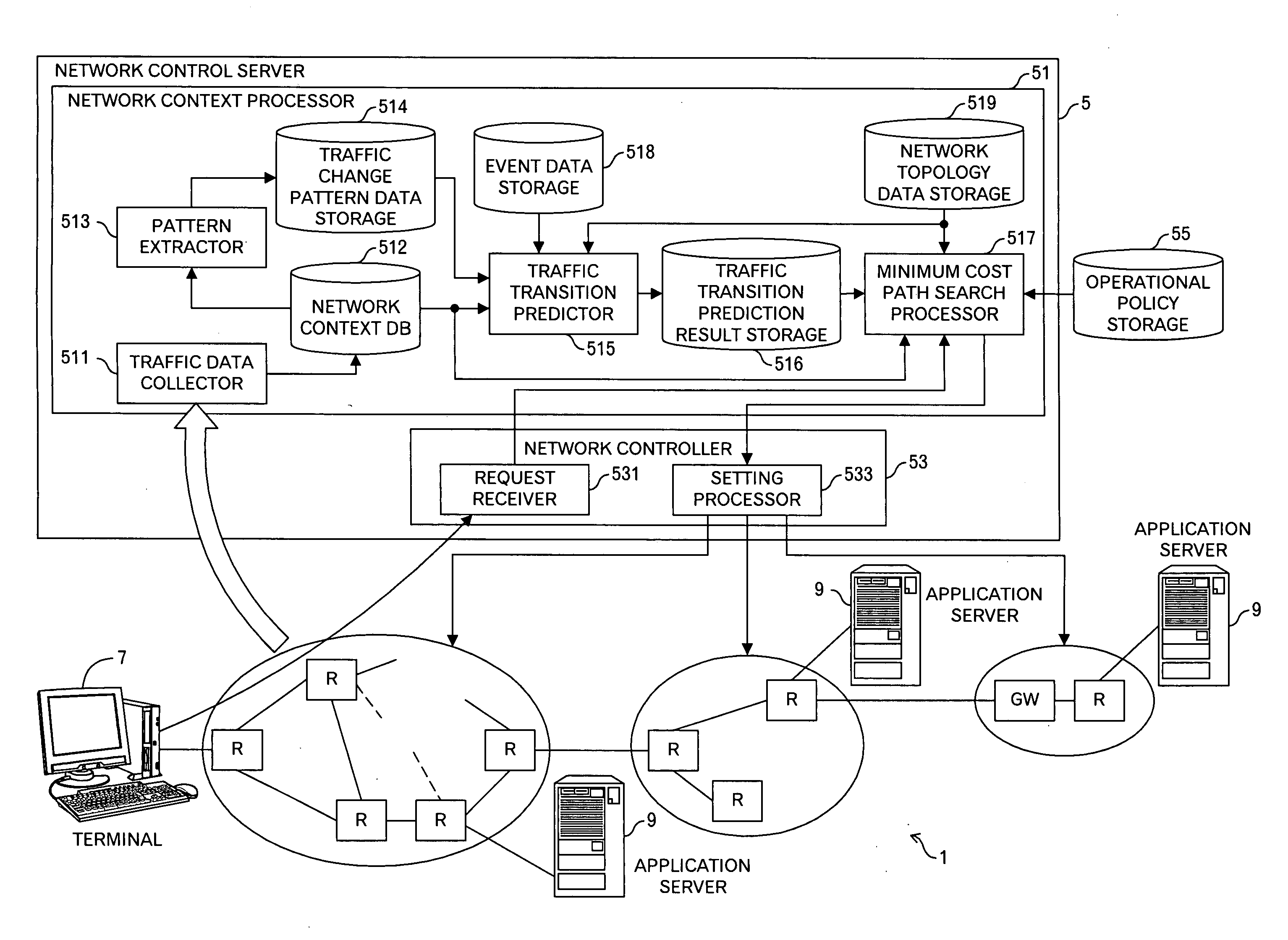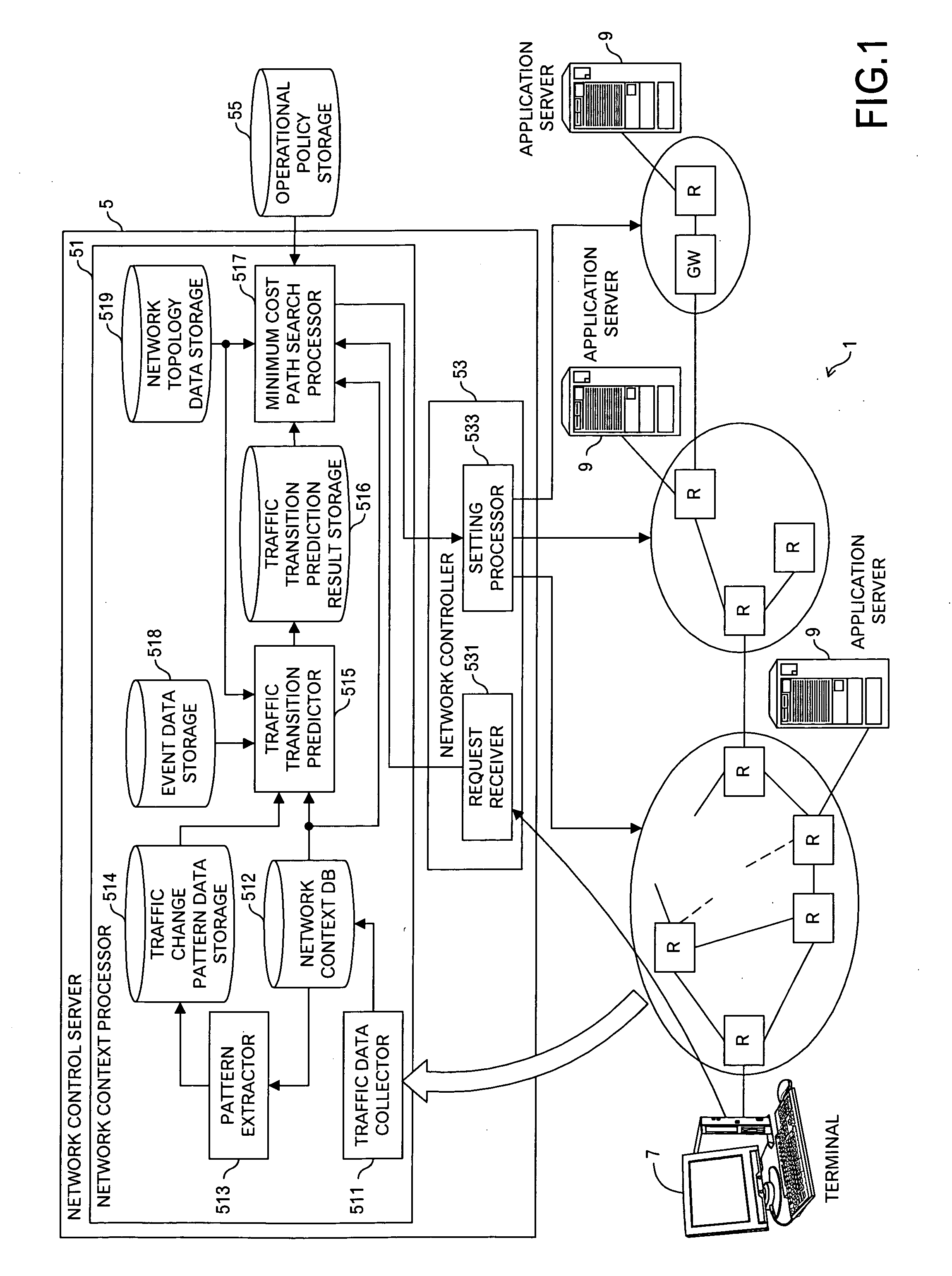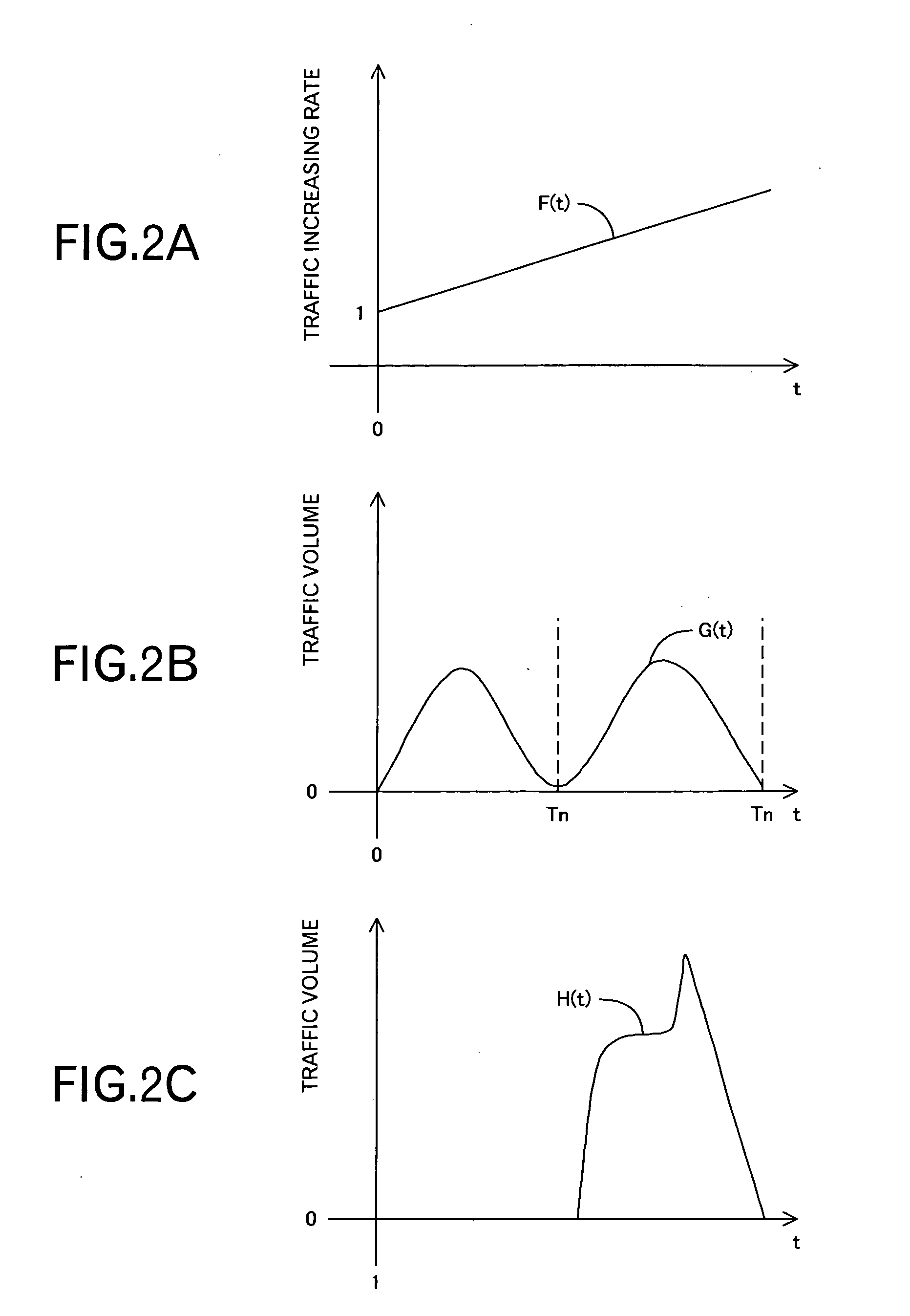[0022] Still another object of the present invention is to provide a technique for maximizing the resource utilization efficiency over the long term as well as at the time of the
resource allocation request by carrying out the
resource allocation taking into account the predicted utilization transition of the network resources.
[0024] Further object of the present invention is to provide a technique on network operation for reacting promptly with a traffic change or an abnormal condition, and for reducing network operation cost by systematizing the manual network operations to reduce the cost.
[0027] Basically, when the arrival of large traffic such as a large bandwidth or long
holding time can be predicted, a
minimum cost path is allocated to the large traffic. This improves the efficiency of the resource utilization. More specifically, it is assumed that there is a network in which N nodes are connected via a bidirectional ring as shown in FIG. 26, for example. The path connecting adjacent nodes includes a shortest path of one hop and an alternative path of N−1 hops. It is assumed here that, as shown in FIG. 27, a path setting request of a path #a carrying small traffic (bandwidth Ba,
holding time ha) arrives and, immediately thereafter, a path setting request of a path #b carrying large traffic (bandwidth Bb, holding time hb) arrives. If the arrival of the path #b is not predicted, the shortest path is allocated to the path #a and an alternative path is allocated to the path #b, because the path #b is requested while the shortest path is occupied by the path #a. The
resource consumption (the total sum of the used bandwidths for the used links) is represented by Baha+(N−1)*Bbhb. If the arrival of the path #b carrying the large traffic can be predicted, the alternative path is allocated to the path #a requested earlier in order to allocate the shortest path to the path #b. And then, at the time of receiving the request for the path #b, the shortest path can be allocated to the path #b. The
resource consumption (the total sum of the used bandwidths for the used links) is represented by Bbhb+(N−1)*Baha. When the
traffic volume of the path #b is remarkably larger than the traffic volume of the path #a, for example, when the path #a is for use in a phone call with the holding time ha of two minutes and the path #b is for use in video distribution with the holding time hb of two hours, the former allocation is overwhelmingly less efficient because the alternative path is occupied for the long holding time. Assuming Bbhb>>Baha is satisfied here in an extreme case, and Baha can be negligible, the
resource consumption is (N−1)*Bahb unless the arrival of the large traffic is predicted. If it is predicted, the resource consumption is Bbhb when the shortest path is allocated to the large traffic. Therefore, the resource consumption when predicting the arrival of the large traffic becomes 1 / (N−1) comparing with the case where the arrival of the large traffic is not predicted. As described above, it becomes possible to optimize the utilization efficiency of the resources, not instantaneously, but for the long term, by predicting the future traffic transition.
[0028] A routing control method according to a second aspect of the present invention, comprises: receiving a connection set-up request; and selecting a resource selection
processing for the connection set-up request among a first
processing, a second
processing and a third processing. The first processing comprises: reading out predicted utilization transition data associated with the received connection set-up request from a predicted utilization transition data storage storing the predicted utilization transition data in future for each resource in a network, and selecting a resource satisfying a first predetermined condition based on the read predicted utilization transition data. The second processing comprises: selecting a resource satisfying a second predetermined condition by using data concerning a static attribute for each resource of the network, the data concerning the static attribute stored in a
network data storage. The third processing comprises: selecting a resource satisfying a third predetermined condition by using current utilization status data for each resource of the network, the current utilization status data stored in a network
context data storage. Thus, by switching the resource selection processing according to needs, the resource can be appropriately selected depending on the situation.
[0031] In general, the routing control method according to the first aspect of the present invention may further include: detecting the arrival of the connection set-up request for the large amount of traffic whose bandwidth or holding time is greater than a predetermined value on the basis of the predicted utilization transition data. And, the aforementioned selecting may include: obtaining a cost of each resource for a communication request for traffic other than the high volumes of traffic based on the predicted utilization transition data relating to the arrival of the communication request for the large amount of traffic to select a resource whose cost satisfies a second predetermined condition; and obtaining a cost of each resource for the communication request for the large amount of traffic by using current utilization status data for each resource of the network, which is stored in a network
context data storage, or by using static attribute information stored in a
network data storage to select a resource whose cost satisfies a third predetermined condition. This enables a
minimum cost path to be allocated to the connection set-up request for the large amount of traffic.
 Login to View More
Login to View More  Login to View More
Login to View More 


